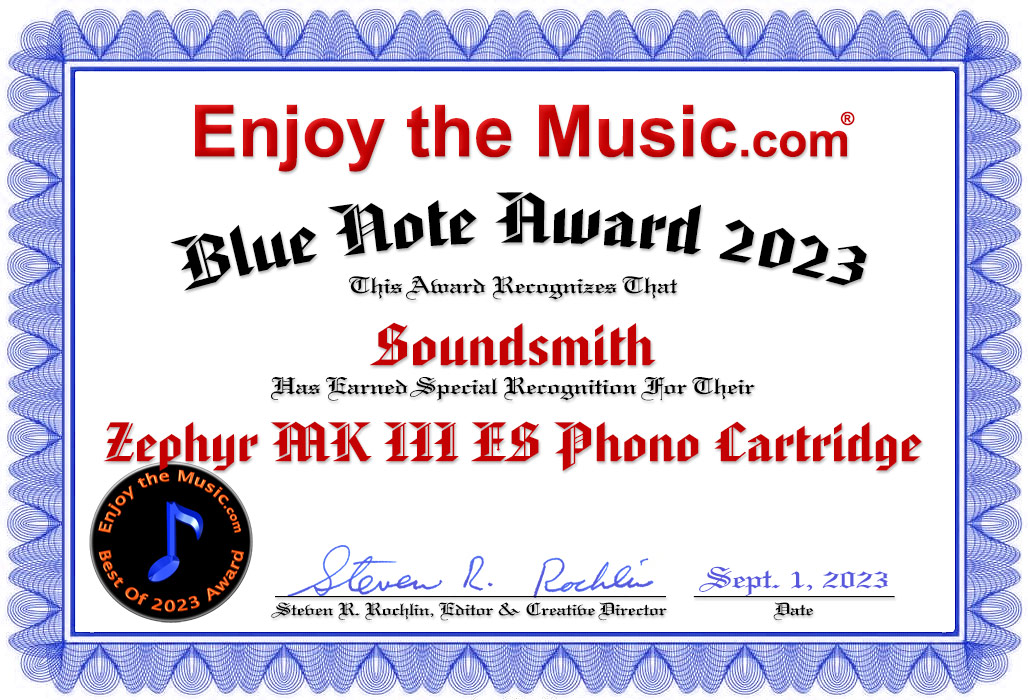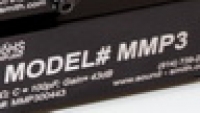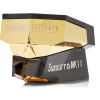What are the causes of Sibilance?
Sibilance can be caused by many aspects of analog vinyl replay.
It is important to determine if the problem relates to a small amount of recordings, or many records, and the condition of those records. If it is only a few recordings, then sibilance is often casued by a bad recording, bad pressing, or damaged records. A NEW record, played ONCE with a worn stylus, WILL aquire sibilance. A poor pressing or a damaged record will absolutely result in sibilance, and since the amount of high frequency and the mastering process differs dramatically from one record to the next, it can be difficult to determine if sibilance is the result of the mastering, the recording, record condition, or the playback device.
ONLY If sibilance is detected on a broad range of recordings, then one can point to something other than the records themselves. Troubleshooting is always "divide and conquer" to get to the root problem. Sibilance is one of the more challenging things to solve for the novice. I will list the issues from the most common to the least:
- Worn stylus/damaged stylus
- Fouled stylus
- Low end styli (conical)
- Improper antiskating (PLEASE FOLLOW OUR INSTRUCTIONS - DO NOT USE A TEST RECORD)
- Improper azimuth (far more critical as styli become more esoteric in shape)
- Improper VTF
- Bad tone arm bearings
- Improper resonance (many causes, including tone arm, failed or badly engineered or damaged cartridge)
- Very bad SRA
Item 1 - Requires inspection by someone with proper knowledge and optics. Badly worn styli will damage records with ONE PLAY and cause permanent sibilance on the record.
Item 2 - Mandates careful cleaning with isopropyl alcohol – especially for suspected badly fouled styli, or the Soundsmith OCL* stylus design
Item 3 - ….well, nothing to be done except replace cartridge. (Conical styli will have more at end of record)
Item 4 – Very common problem – please refer to Soundsmith website for proper setting
Item 5 – Very common cause with more esoteric styli - especially the Soundsmith OCL* stylus design. Major problem for arms that don’t have azimuth adjustment. If suspected, make MAJOR changes one direction and the other to rule azimuth in or out as the cause, (see website for how to change azimuth for arms that don’t have azimuth adjustment)
Item 6 – Easily measured, except that certain scales (electronic) can have very bad interaction with stray magnetic fields from certain cartridges. ALWAYS space the cartridge UP from the measuring platform with plastic box or the like (1” high min). Do not “undertrack” by using too low a VTF. MAKE CERTAIN that if you are measuring VTF on a tone arm that uses an underslung counterweight (like VPI) that you measure the VTF at the exact height of the platter PLUS one record thickness or you will get WRONG READINGS.
Item 7 – This happens far more often than one would like to realize – and very hard to test or “feel” play in bearings. Unipivots can have damaged bearings that are hard to see unless a microscope is used.
Item 8 – Hard to pin down, experiment with major mass loading to try to rule out cart/arm interaction
Item 9 – Set incorrectly when cart was installed, bad Stylus Rake Angle from factory, collapsed MC suspension, far too much VTF (sometimes caused by metal platter and MC carts being magnetically pulled down)
The challenging thing is that sibilance can be caused by one or MORE of the above items. Going through each one as best as one can often results in minimizing or elimination of sibilance.
- The OCL styli design is used in the following Soundsmith designs: Hyperion, Helios, Sussurro, Mezzo, The Voice, Sotto Voce, Aida, and Norma.
- The OCL stylus looks to be raked back by about 20 degrees, but that is the shaft of the stylus ONLY, and NOT the last facet on the bottom tip, which restores the angle to 2 degrees. This stylus has a flat back, and can tend to build up debris easily on its back surface, and should be cleaned via the Blue – Stik method described on our website on every play. Alcohol should be used ONLY when this cleaning process is suspect of not removing the debris. The Azimuth setting of this stylus design is very critical, as incorrect setting can result in sibilance and excessive groove noise.









